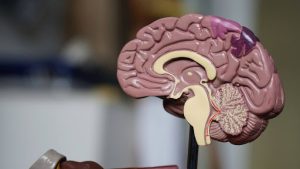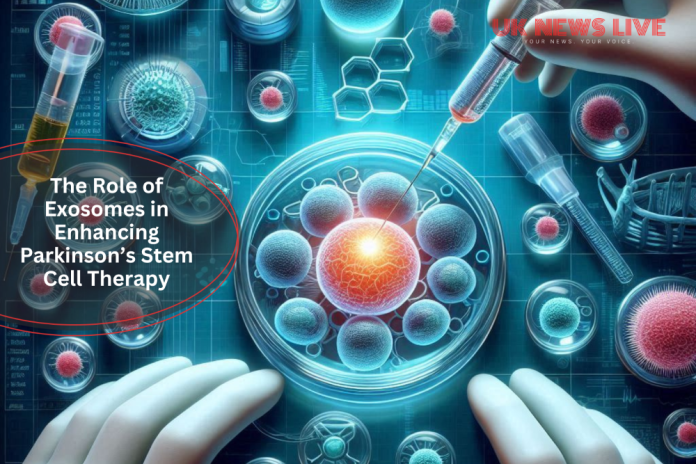Stem cell therapy terminology can be overwhelming, but it’s crucial to fully understand how stem cell therapy works before deciding on this innovative treatment.
To help you better understand stem cell therapy, this article will explain what stem cell exosomes are, the role of exosomes in Parkinson’s therapy and the safety and ethical issues regarding this treatment.
Stem Cell Therapy for Parkinson’s Disease
Parkinson’s disease is a neurodegenerative disorder caused by the loss of neurons in the part of the brain responsible for dopamine production. With decreased levels of dopamine, people with Parkinson’s experience symptoms such as:
- Tremors
- Stiffness
- Balance issues
- Cognitive impairment
- Depression, anxiety, mood disorders
Parkinson’s treatment with stem cells can reduce Parkinson’s symptoms because stem cells can differentiate into brain cells and restore the part of the brain responsible for dopamine production, bringing dopamine back to normal levels.

Exosomes: Definition and Function
Exosomes are microvesicles of stem cells that transmit signals to other cells in the body to influence their behavior and cause biological changes that help heal damaged tissues.
The Mechanism of Exosomes in Enhancing Stem Cell Therapy
Many new stem cell treatment clinics, including Swiss Medica, use MSC-derived exosomes in Parkinson’s therapy.
Exosomes carry the same therapeutic benefit as MSCs and contain a range of lipids, proteins and nucleic acids that positively affect cellular processes. Because of their ability to communicate with other cells and influence change, exosomes are more efficient at delivering the therapeutic benefit of stem cells.
MSC-derived exosomes release growth factors that promote neuron growth in damaged tissues and cytokines that regulate immune response. Although MSC therapy has relatively few side effects, using MSC-derived exosomes is even safer for the patient, as this method minimizes the risk of immune rejection.
Application of Exosome Therapy in Parkinson’s Disease
Pretreatment
The first step in receiving exosome therapy for Parkinson’s is consulting with a stem cell therapy clinic to develop a personalized treatment plan and identify what stem cell source to use.
After the stem cells are extracted, they are isolated and cultured. Exosomes are then extracted from the culture and tested in the lab to determine that exosome quantity and quality are sufficient.
The patient receives exosome therapy in the form of traditional injections. Treatment sometimes causes a fever, but this typically goes away on its own.
Benefits of exosome therapy for Parkinson’s
Exosomes contain a range of bioactive molecules with neuroprotective and neuroregenerative properties, which makes exosome therapy a good fit for treating Parkinson’s disease. MSC-derived exosomes also have an immunomodulating effect, which is useful in treating neuroinflammatory conditions like Parkinson’s.
Patients who undergo exosome therapy for Parkinson’s disease may see improvements such as:
- Improved speech
- Reduced rigidity
- Reduced tremors
- Decreased reliance on medications
- Slowed or stopped disease progression
Stem cell therapy is not a miracle Parkinson’s disease treatment, but patients can still see remarkable improvements, especially compared with medications that only manage symptoms and come with serious adverse effects.
When stem cells are used to treat Parkinson’s, patients should also take other steps to support their recovery, such as healthy eating, fitness exercises, and occupational therapy.
It can take 3-6 months to see results and patients must attend follow-up appointments so doctors can assess the effectiveness of the therapy and make any necessary changes.
Safety and Ethical Considerations
The safety and ethical considerations associated with stem cell therapy originate from embryonic stem cells. Embryonic stem cells are obtained from a human fetus, which requires the destruction of a human life. Embryonic stem cell therapy is also associated with risks such as tumor formation and immune rejection.
On the other hand, exosomes derived from mesenchymal stem cells (MSCs) are an ethical form of stem cell therapy, as MSCs are obtained from the tissue of a consenting donor or the patient.
There are very few side effects associated with MSC therapy, the most common being a mild fever following the injection. Consulting with a doctor prior to treatment can help you identify any contraindications that make MSC-derived exosomes unsafe.
In Conclusion
Exosomes are microvesicles that hold the therapeutic benefits of the stem cells from which they come. They communicate with other cells and influence their behavior by exchanging substances. Exosomes are more efficient at delivering the therapeutic effects of stem cells and come with a lower risk of rejection.
MSC-derived exosomes are an effective Parkinson’s disease treatment because they can differentiate into brain cells and restore neurons responsible for dopamine production. Increased dopamine can reduce rigidity, reduce tremors, and improve speech, drastically improving the quality of life for people with Parkinson’s.





























